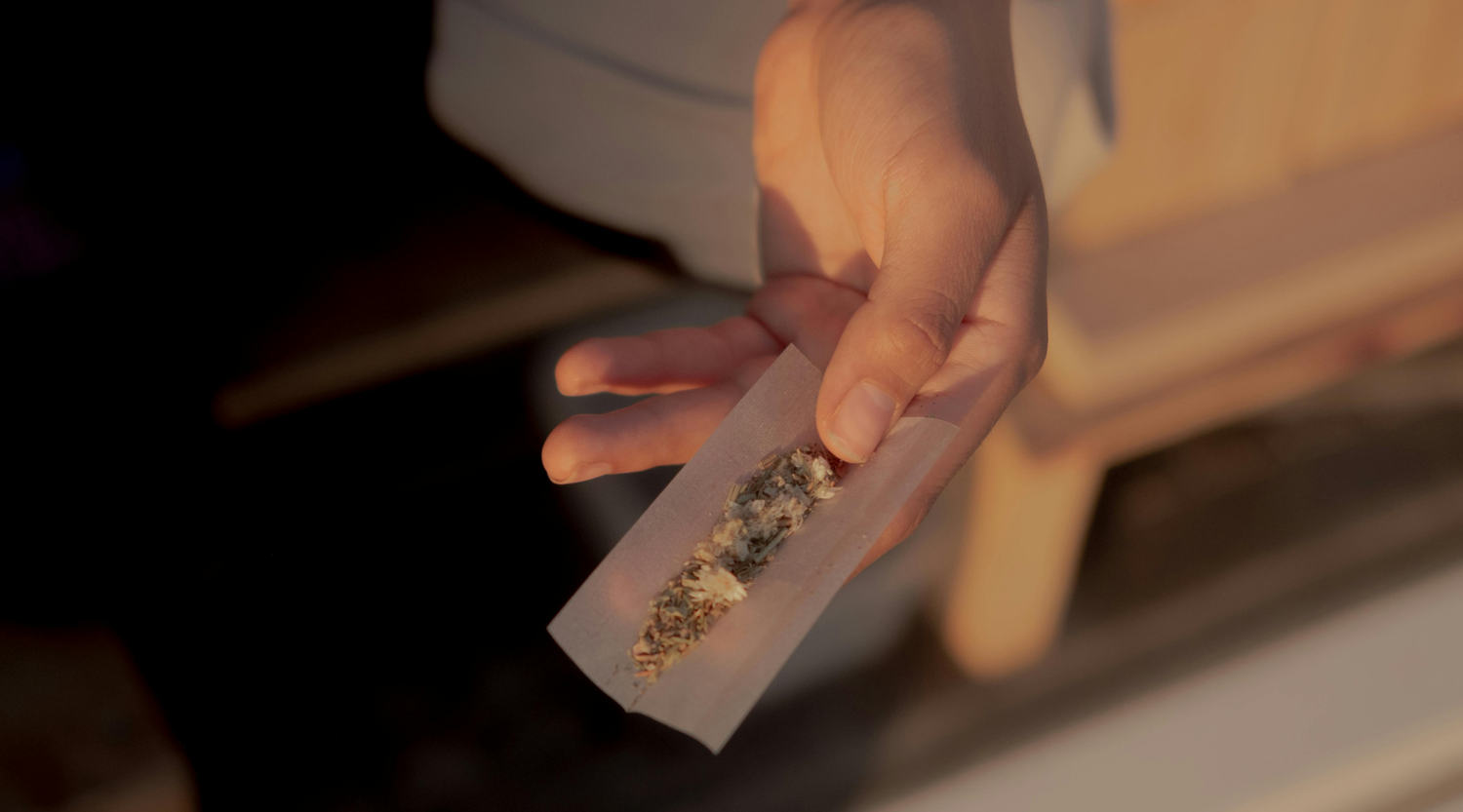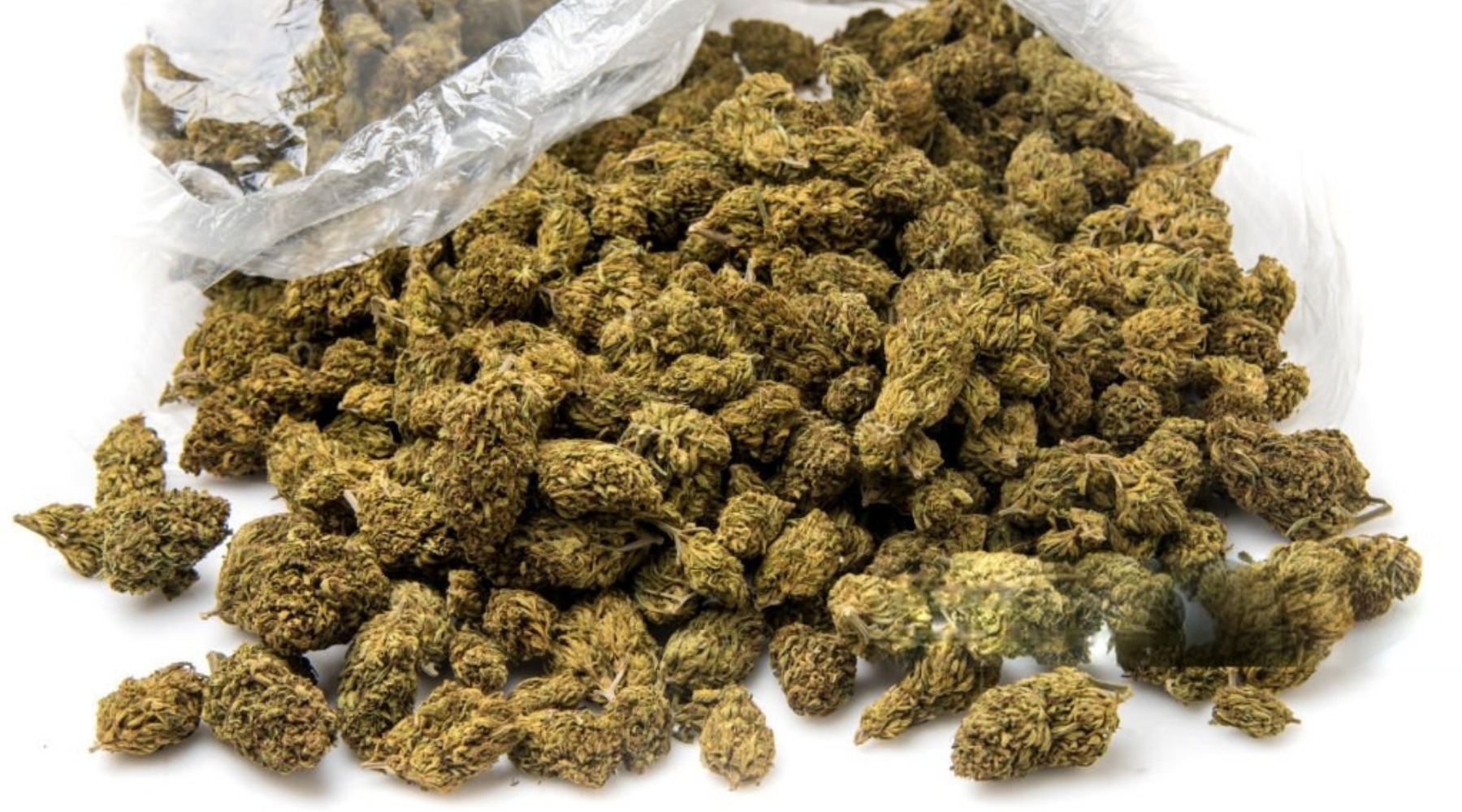If you care about your high-quality joint, you should care about the rolling paper. It’s the one part of the process that touches every hit. So, when it burns wrong, tastes off, or starts unraveling halfway through, the whole session takes a hit.
That’s the difference most people overlook. Premium rolling papers don’t just hold your flower, they shape how it burns, how it draws, and how it hits your throat. You don’t need to be a rolling expert to feel the change either. The right paper improves flavor, holds structure, and gives you control over the entire roll.
This guide breaks down what actually matters: materials, burn rate, thickness, sizing, and how those all affect the end result. Whether you're rolling solo or stacking pre-rolls for a team, this isn't about trends or brands. It's about performance.
If you're ready to roll cleaner, burn slower, and get a joint that actually smokes the way you want it to, you're in the right place.
Let's roll this in, shall we?
Why Rolling Paper Choice Matters
The rolling paper is one of the few things in the process that directly controls how the session performs. It’s easy to overlook, but the type of paper you use plays a role in flavor clarity, airflow, and how reliably your joint burns. If you’re trying to get cleaner, more consistent results, this is the variable to start with.
Impact on Flavor and Burn
Rolling paper affects more than just structure. It shapes the way your flower smokes. Low-quality or overly processed papers can leave behind a noticeable aftertaste, masking the actual profile of the strain. That matters if you’re smoking premium bud and want to experience its full flavor. Thinner, natural papers let the terpenes come through clean without competing with the material they’re made from.
Burn control is another key factor. Poorly made papers often cause uneven burning, hot spots, and canoeing. This throws off airflow and leads to wasted flower.
A well-constructed paper keeps the burn steady and centered, helping your joint stay lit and pull smoothly throughout the session. If you’re relighting constantly or dealing with lopsided burns, switching papers is usually the fix.
Getting this part right isn’t about personal preference. It’s about reliable function. When the paper holds flavor and burns correctly, the entire session improves.
Enhancing the Smoking Experience
The rolling paper directly influences how smooth and consistent your joint feels from start to finish. When the paper is built right, it wraps clean, holds shape under pressure, and stays intact from packing to ash.
You’re not dealing with rips, bad seals, or fold lines that throw off the roll. The joint stays firm, stable, and easy to handle, even in less-than-perfect conditions.
The smoking quality changes too. A good paper supports better airflow and less drag. That means smoother pulls, fewer relights, and a hit that feels more balanced, especially if you're rolling tight or working with sticky flower. Paper that burns too fast or draws unevenly ends up wasting product and interrupting the session. Quality papers solve that problem before it starts.
You notice it when you smoke. Not just in the flavor, but in the pacing, the draw, and how natural the whole session feels. If the paper isn’t performing, you feel it in every puff. Get the paper right, and everything else runs better.
Types of Rolling Paper Materials
Material is one of the most important specs to look at when choosing rolling papers. It affects everything from burn rate to how easy the paper is to handle. Some materials are better for flavor clarity. Others are built for structure or speed. Knowing the difference helps you choose the right paper for how you roll and what kind of session you want to have.
Wood Pulp: Easy to Roll, Fast Burn
Wood pulp is the most widely used material for rolling papers, especially in beginner-friendly products. It has a thicker texture compared to alternatives like rice or hemp, which makes it easier to grip and roll with, especially if you’re still getting the hang of the process.
It holds structure well and resists tearing, which is why it’s often the default choice for new rollers or anyone rolling quickly in less-than-ideal conditions.
The downside is its burn profile. Wood pulp papers tend to burn hotter and faster, and they can produce a bit more ash.
That makes them less ideal for long sessions or flavor-forward strains where slow, even combustion matters. You’ll still get the job done, but it might not be the smoothest experience.
That said, wood pulp has its place. If you’re looking for a paper that’s sturdy, easy to roll, and doesn’t require precision or finesse, it delivers. Just know that it’s better suited for speed and convenience than for optimizing flavor or burn longevity.
Hemp: Eco-Friendly and Balanced Burn
Hemp rolling papers are made from raw hemp fibers, offering a strong middle ground between thin and thick materials.
They’re firm enough to handle during the roll without slipping, but not bulky or over-processed. That balance makes them one of the easiest papers to work with, especially for people who want better flavor and a cleaner burn without giving up structure.
They produce a mild, slightly earthy undertone, but it’s not enough to overpower the taste of your flower. Most people find that it actually complements the terpenes, especially when smoking naturally grown strains.
Hemp papers also burn at a steady, moderate pace. They don’t torch your joint too quickly, and they’re less likely to go out midway through a session compared to thinner alternatives.
Hemp rolling papers are a solid everyday choice. They work well for solo sessions and group smokes alike, holding up across different packing styles and flower textures. If you want reliability without sacrificing burn quality, hemp is the move.
Rice: Ultra-Thin and Slow-Burning
Rice papers are known for their lightweight feel and slow, controlled burn. They’re thinner than most other materials, which gives them a smooth finish and almost no taste. That makes them ideal for smokers who want to taste the flower without the paper getting in the way. If your focus is terpene clarity and burn longevity, rice papers deliver.
Because of how thin they are, rice papers burn slower than wood pulp or hemp. You can pack a joint and let it run for a while without needing constant attention. That’s why seasoned rollers tend to lean toward rice. They offer more control during the smoke, especially with well-cured bud.
That said, they’re not the most forgiving. Rice papers can be slick to handle and slightly tricky to seal if you’re still learning to roll.
They're more sensitive to humidity too, which means they can absorb moisture and become harder to light or keep lit in outdoor environments. So if you’re rolling in a rush or dealing with sticky flower, you might need more patience.
Still, for experienced smokers who value a clean hit and an even pace, rice papers are a top-tier choice. They stay out of the way so your flower can take the lead. That’s the goal for a lot of people who know their way around a proper joint.
Flax and Other Natural Fibers
Rolling papers made from flax or mixed plant fibers offer a middle-ground experience. They’re typically lightweight like rice papers but have a bit more structure, similar to hemp. That balance makes them easy to work with while still giving you a slow, steady burn. You get the control without needing the finesse that rice papers demand.
Most flax-based options are unbleached and free of chemical additives, which helps with both taste and airflow. They don’t add much flavor, so the profile of your flower stays intact. For anyone who’s smoked papers that leave behind a weird, chalky aftertaste, this is the kind of material that avoids that entirely.
The texture of flax papers feels natural in the hand. They grip well, fold cleanly, and aren’t prone to tearing unless you’re being careless. That makes them solid for both beginners and experienced rollers who want something that performs without the extra effort.
If you’re looking for a rolling paper that sits between ultra-thin and heavyweight, flax is worth trying. It gives you a smooth, even smoke with a cleaner finish, and it holds up in different settings without being too delicate or too stiff.
Rolling Paper Sizes Explained
Paper size affects everything from how long your session lasts to how easy your joint is to roll and share. Some sizes are made for quick personal use. Others are better for group sessions or longer burns and may require specific rolling accessories. Understanding what each size offers helps you match your paper to your smoking goals. Whether that’s a solo nightcap or prepping multiple pre-rolls ahead of time.
Single Wide
Single wide papers are the most compact option out there. They’re designed for quick, low-volume sessions. These good ones are ideal when you just need a short hit without going overboard.
Most of the time, these will fit a small joint that burns fast and clean, making them a solid pick for light smokers or anyone who prefers shorter sessions throughout the day.
These papers are also great if you’re into microdosing or just want a tighter, less wasteful roll. But they do have limits. If you try to overpack them or stretch them beyond their size, they’ll start to tear, canoe, or burn unevenly.
They’re not built for heavy flower loads or group sessions.
For new rollers, single wide papers are easy to handle and forgiving in small doses. They give you enough space to work with while keeping things manageable.
And if you’re someone who values control and simplicity over size, they get the job done without any extra bulk.
1 1/4 Size: The Most Popular Choice
1 1/4 rolling papers are the standard for a reason. They offer the perfect middle ground. Enough space to roll something solid without it being oversized or awkward to handle.
You can fit around half a gram to three-quarters of a gram comfortably, which is ideal for both solo sessions and casual sharing. This size also gives you flexibility in how you roll. Whether you’re going for a cone shape or something straighter and tighter.
Compared to single wides, they’re much easier to work with, especially if you like a fuller roll that still burns clean.
Most rolling trays, filters, and accessories are sized to match this format, which keeps your setup smoother overall. You’re not fighting against short papers or having to trim things down to size. It just works.
For a lot of smokers, this becomes the everyday choice. It’s reliable, consistent, and doesn’t require much adjustment whether you’re rolling with sticky flower or dry bud. If you want something that balances convenience, control, and burn time, this is the size you’ll probably keep stocked.
1 1/2 Size
The 1 1/2 size rolling paper is a slight upgrade in width compared to 1 1/4, giving you more space to work with when you want a heavier pack or a longer session. It’s a solid middle ground if you’re not quite ready for king-size but want more volume than the standard roll.
You can fit in extra flower without overstuffing or throwing off the shape, which makes this size especially useful for social settings or when you want something that lasts a bit longer.
The wider format does take a little adjustment if you’re used to rolling smaller papers. Getting an even roll with good airflow might take a couple of tries, but once you find the rhythm, the payoff is worth it. The burn is consistent and holds up well, even with slightly stickier or denser bud.
For smokers who like a fuller hit without going all-in on a massive roll, 1 1/2 papers hit the sweet spot. They’re practical, they hold shape well, and they give you the flexibility to scale your session up without overdoing it. If you haven’t tried them yet and find yourself maxing out 1 1/4s often, this is the next step up.
King Size and King Slim
King-size rolling papers are built for long sessions and bigger crowds. They give you the space to roll something that lasts, from start to ash, without needing constant relights or multiple rolls.
Whether you’re passing it around or just want one joint that carries the whole evening, king-size gets it done. You can easily fit a full gram or more without compromising structure, which is why they’re a go-to for social smoking or heavier personal use.
King slim, on the other hand, keeps the same length but trims down the width. It’s ideal if you like the slow burn of a long paper but want something more refined and easier to control.
You still get a decent volume, but the roll feels tighter, and the cone comes out cleaner. That makes king slims a favorite for people who want to stretch the session without going full bulk.
Both options give you more time between rolls and let you fine-tune the flow and draw. They’re not beginner papers. Rolling with this much surface takes practice. But once you’ve got your technique down, they offer some of the most consistent and rewarding smokes.
If you want one-and-done simplicity with room to customize, king-size and king slim are both worth keeping in rotation.
4 Key Rolling Paper Features to Consider
Once you know the material and size you’re going with, it’s the finer details that separate a smooth roll from a frustrating one. Things like thickness, texture, and how well the paper seals can make or break the joint. These small but crucial elements affect how the paper handles during prep and how it performs once it’s lit. Dialing in the features that match how you like to roll makes your setup more reliable and your sessions way easier to control.
1. Thickness and Burn Rate
The thickness of a rolling paper affects how it handles during the roll and how it performs once lit. Thicker papers are easier to grip, fold, and seal. That’s especially helpful if you’re still getting your technique down or you’re rolling in less-than-ideal conditions. But there’s a tradeoff: thicker papers burn faster and often hotter, which can lead to quicker sessions and more frequent relights.
Thinner papers take more finesse to roll, but they burn much slower and cleaner. That makes them a better choice if you’re using high-quality flower and want to stretch out the session without interference. The thin profile also produces less ash, helping keep airflow consistent.
Most paper packs include thickness info. Usually labeled as “ultra-thin,” “medium weight,” or “standard.” If you want better flavor and a longer burn, go thin.
If you want a low-maintenance roll that’s easy to seal and less likely to rip, go thicker. Either way, matching thickness to your rolling skill and session type will make a noticeable difference.
2. Flavor Additives and Their Effects
Flavored rolling papers are designed to add an extra layer to the session, but they come with trade-offs.
You’ll find options that range from fruit blends like cherry or grape to stronger profiles like chocolate, vanilla, or mint. These are mostly about setting a mood or masking the taste of lower-grade flower. Not enhancing the quality of the smoke itself.
If you’re using top-shelf bud, flavored papers can get in the way. They coat the tongue and shift the taste, often dulling the natural terpene profile you actually paid for. That might be fine if you’re just looking for novelty, but not if you’re trying to taste the flower for what it is.
For people rolling with mid-tier or dry herb, flavor papers can be helpful. They make the session feel smoother, hide harshness, and give the joint a more uniform taste. But they’re not for everyone, and definitely not for every strain.
Use flavored papers when you're intentionally building a certain type of experience. Something more casual, fun, or themed. Otherwise, stick to unflavored options if the goal is clarity, control, and preserving what’s already in your bud.
3. Adhesive Types: Natural Gum vs. Synthetic
The glue strip on a rolling paper might seem like a small detail, but it plays a big role in how reliable your roll is and how clean it smokes. Most papers come with either natural gum. Typically from acacia or other plant resins. Or, a synthetic alternative.
The difference isn’t just about ingredients; it’s about how the paper handles and what it leaves behind when burned.
Natural gum holds tight without adding any taste or unwanted chemicals. It melts clean into the paper when sealed properly and doesn’t interfere with the flavor of your flower. That makes it the better option if you’re trying to keep things pure and consistent. You’ll notice fewer sealing issues too, especially with thinner or more delicate papers.
Synthetic glue shows up mostly in lower-end papers. It might hold initially, but it often leaves behind a strange aftertaste or burns in a way that throws off the balance of the joint. You’re also more likely to deal with peeling edges or inconsistent adhesion, which becomes frustrating mid-roll.
If you’re after cleaner sessions and better control over the roll, natural gum is the way to go. It holds firm, burns evenly, and doesn’t get in the way of what your flower’s supposed to taste like.
4. Transparency and Appearance
Rolling paper appearance isn’t just about looks, it’s also a good indicator of what you’re smoking with. You’ll come across everything from crisp white sheets to light brown or nearly see-through papers. That variation usually comes down to how the paper was processed, and it can tell you a lot about what’s in it and what’s not.
Papers that are almost transparent are usually ultra-thin and minimally processed. They don’t hide your herb, which makes it easier to spot issues with packing or airflow before lighting up. They’re also lighter on additives, which helps if you’re trying to keep your sessions clean and focused on the flower.
Bleached white papers are common, but the tradeoff is chemical exposure. They go through a whitening process that may involve chlorine or similar agents. While many brands say it’s safe, it still alters the paper’s burn and flavor slightly. Some smokers notice a sharper aftertaste or faster ash buildup when using these.
Unbleached and brown papers are typically labeled as natural. They’re not treated for color and tend to burn slower and cleaner. If you care about low-residue sessions and preserving terpene flavor, these are often the better option.
When you're scanning your options, appearance isn't just aesthetic, it's functional. The less treatment and processing, the more control you’ll have over taste, burn, and what you're actually inhaling.
Conclusion: Selecting the Perfect Rolling Paper for Your Needs
The rolling paper you use does more than just hold your joint together. It influences everything from airflow to how each hit feels. If the paper burns too fast, has added flavors, or doesn’t seal right, it can cut into what should’ve been a solid session.
Get it right, and everything flows smoother: cleaner flavor, better draw, and less effort managing the roll once it’s lit.
There isn’t one “best” paper across the board. What works for a quick solo joint might not be ideal for a group session or a high-end flower. Your choice should match how you like to roll, what you're smoking, and the kind of experience you want from it.
Maybe you care about natural materials. Maybe burn speed matters more. Or maybe you're just trying to keep it clean and consistent every time.
If you're still testing things out, don’t overthink it. Try a few different papers. Hemp, rice, king-size, unbleached, and pay attention to what rolls easiest and smokes best for you.
Once you’ve got a favorite, you’ll stick with it because you’ll know exactly what to expect. And that consistency? It’s what makes every roll better.
Since you now know how to choose the best rolling papers, it's now time to rock and ROLL.





LEAVE A COMMENT
All comments are moderated before being published.
This site is protected by hCaptcha and the hCaptcha Privacy Policy and Terms of Service apply.